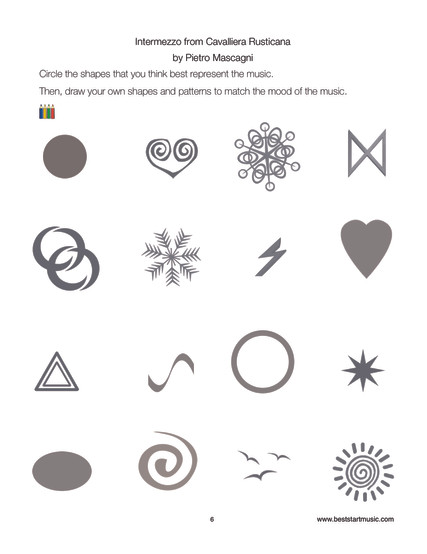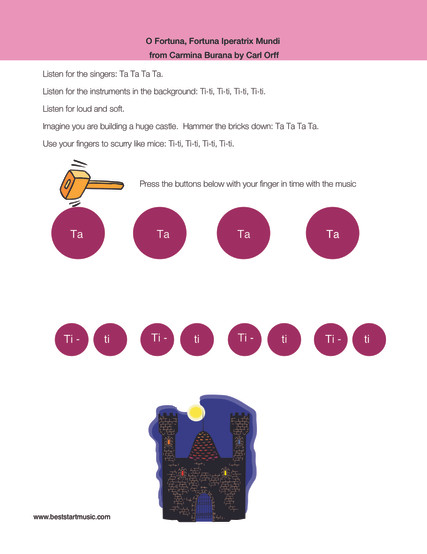I believe in action and activity. The brain learns best and retains most when the organism is actively involved in exploring physical sites and materials and asking questions to which it actually craves answers. Merely passive experiences tend to attenuate and have little lasting impact. (Gardner, 1999, p 82)
Research has shown that engaging in physical activity before or during learning benefits academic performance.
Here are eleven examples of how you can include movement in music lessons and group classes.
Download a free poster of these ideas, plus a free sample from Listen & Move! https://www.beststartmusic.com/product-page/digital-file-music-movement-ideas
1. Dance to music
Think about how your movements can reflect the character or the feeling of the music. Use scarves, tissues, ribbons to add an extra expressive element.
2. Musical Freeze
Dance to music and freeze when the music stops OR the opposite! Dance or jump up and down while waiting for the music to come on, freeze (and listen!) when the music starts.

3. Use your body!
Sing and "play" simple 3 and 5 note songs on your body. For example, try Hot Cross Buns by moving your hands from your your head, to shoulders, to waist for each note:
Hot = touch your head
Cross = touch your shoulders
Buns = touch your waist
One a penny = your waist
Two a penny = your shoulders
4. Keeping the beat
Put on music and keep the beat. You can clap, march, tap the floor, tap your elbow or nose, use percussion instruments, tap with one finger or one foot only, or make a simple drum and use it!
Learn how to make a simple drum here:
Follow the leader
Make a "follow the leader" game out of it by assigning one member of the group to be the leader. Everyone else has to follow the movement the leader does.
Beat Detective
Turn this game into a "beat detective"game: One person (the detective) leaves the room and the rest of the group decide which member will be the leader. When the detective enters the room again they have to try and work out who is the leader!

5. Balancing act
Put a line of tape on the floor and take turns to balance along the line as music plays. You can discuss what kind of music would be most suitable for balancing. Loud and fast music? Soft and slow? Try out both!
6. Airborne
Put on music and try and keep a small feather or a tissue in the air by blowing it.

7. Bouncing balls
Bounce a ball in time with the music. This can be done individually, with a partner, or in a group. Use the ball to explore long notes and quick notes with long passes to a partner and little, quick bounces.
8. Difference games
Play loud and soft music - when the music is loud jump up and down, when the music is soft, crouch down low. Gradually make the changes between the music quicker and quicker!
You can do many variations on this idea. For example:
Slow - Fast
Low notes - High notes
Major (happy) - Minor (sad)
Stepping notes - Skipping notes
Instead of jumping and crouching, you could designate two sides of the room and have children running between each side of the room as the music changes.
9. Step/skip/jump
Listen to music moving by step (eg scales, Mary had a little lamb, Hot Cross Buns, Long long ago) and walk around the room or in a circle.
Listen to music that uses wider intervals (eg arpeggios, Montagues and Capulets from Romeo and Juliet by Tchaikovsky, The Happy Farmer) and jump or skip around.
Listen to music that uses a combination of both (eg Lightly row) and change your movements according to the music.

10. Puppets
Make simple puppets to dance and move to the music, or to act out a story to music. Finger puppets and cut out and glue puppets are fun to make. Here are some ideas:
Finger puppets:
Paper bag bunny cut out and glue puppet:
Dragon parade puppet:

11. Poppits
Pop the poppits in time with the music! Use different fingers - are some fingers easier to use than others?

I recently put together Listen & Move! which is a resource of movement activities for teachers. It includes movement and written activities for children.
You can download a free sample here: https://www.beststartmusic.com/product-page/digital-file-music-movement-ideas
Or click on the image to view the full product:
I hope some of these suggestions are useful and help with lesson planning!
Best wishes,
Sarah
Further reading:
Gardner, H. (1999) The disciplined mind. New York: Simon & Schuster.
















Comments